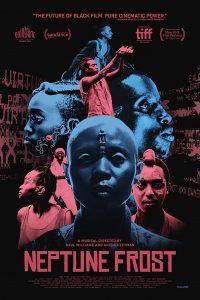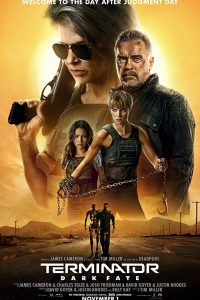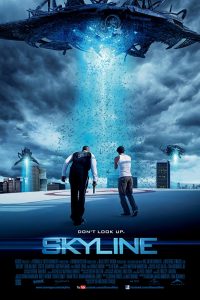Lantern Wilder: A Review of Green Lantern
by Gary Westfahl
 The modern comic book character of Green Lantern, originally Hal Jordan, has lasted for over half a century. He was born from the ashes of a Golden Age superhero who combined awesome powers with a senseless origin story and a disheartening propensity for spending his time in the company of an idiot wielding a wrench. Created to protect his sector of the galaxy from cosmic menaces, he suffered through a period of dreary Earthbound probes into America’s social problems, celebrated for their “relevance,” accompanied by Green Arrow in the role of annoying nag. He has faced the indignity of having his title, costume, and powers usurped at various times by three different men, all deemed equally qualified for the position. He endured an illogical, gut-wrenching transformation into a villainous mass murderer, followed by a rebirth as an entirely different superhero, before being incredibly redeemed and restored to his previous identity. Such a hardy hero will surely survive his latest humiliation, this long-delayed film adaptation.
The modern comic book character of Green Lantern, originally Hal Jordan, has lasted for over half a century. He was born from the ashes of a Golden Age superhero who combined awesome powers with a senseless origin story and a disheartening propensity for spending his time in the company of an idiot wielding a wrench. Created to protect his sector of the galaxy from cosmic menaces, he suffered through a period of dreary Earthbound probes into America’s social problems, celebrated for their “relevance,” accompanied by Green Arrow in the role of annoying nag. He has faced the indignity of having his title, costume, and powers usurped at various times by three different men, all deemed equally qualified for the position. He endured an illogical, gut-wrenching transformation into a villainous mass murderer, followed by a rebirth as an entirely different superhero, before being incredibly redeemed and restored to his previous identity. Such a hardy hero will surely survive his latest humiliation, this long-delayed film adaptation.
This is not to say that Martin Campbell’s Green Lantern is entirely without redeeming features. For individuals with a longstanding connection to the character – and my own dates back to 1960, when I purchased the third issue of the revived Green Lantern comic featuring “The Amazing Theft of the Power Lamp” – there will come a sense of satisfaction, and even joy, at finally seeing this unique superhero rendered persuasively on the screen – though such older readers may be distressed to find that the film follows recent redactions of the character rather than the classic version, wondering why nobody calls Thomas Kalkaku (Taika Waititi) “Pieface,” and who is this Kilowog person (voice of Michael Clarke Duncan) anyway? Jordan’s imaginative creations of green machinery fleetingly convey the spirit of limitless wish fulfillment that lies at the heart of this hero’s appeal, and scenes of Green Lantern in flight, gliding from the screen toward the audience or gently floating to a landing, provide an appealing alternative to the more athletic aerial acrobatics of Superman. For those seeking little more than an entertaining diversion while they stuff themselves with popcorn, Green Lantern will more than suffice.
However, a film about Green Lantern could have been much more than that, and its failure to achieve its true potential is rooted, as is so often the case, in the convoluted mechanics of contemporary film production. Green Lantern is a film haunted by its long, troubled history as an on-again-off-again project that struggled to get what its lead character could effortlessly produce, a green light. After yet another film executive has proclaimed at a meeting that the whole concept is too far-out to succeed, it has to affect the new team of writers who have been brought in to rework the scenario yet again, driving them to develop one more sure-fire crowd-pleasing element to toss into the stew and perhaps convince the skeptical moneymen to finally make a commitment.
To be sure, one issue with this superhero predates this film. Reconceived as a man with almost unlimited powers charged with protecting countless planets from apocalyptic threats, Green Lantern should naturally be featured in vast, superscientific epics reflecting the influence of the character’s true inspiration, E. E. “Doc” Smith’s Lensmen series. (It doesn’t matter that editor Julius Schwartz and writer John Broome have denied the connection, because no one with their backgrounds in science fiction could possibly have been unaware of Smith’s works.) But comic books sought a larger audience than pulp science fiction, and writers had to wonder whether such a cosmic crusader would have sufficiently broad appeal; shouldn’t we do something, they thought, to bring this character down to Earth, so to speak? Thus, even in his classic years, Green Lantern was obliged to alternate awe-inspiring space adventures with battles against routine supervillains and even domestic disputes (as evidenced in the aforementioned third issue, which combined the story of Green Lantern’s desperate mission into the antimatter universe to retrieve his stolen power lamp with a trivial tale about creating a ludicrous monster to dodge Carol Ferris’ dreaded leap-year marriage proposal). In this film, Green Lantern’s primary concern should be a malevolent gaseous entity named Parallax that is intent upon destroying planet Earth as a warm-up to crushing the Guardians of the Universe themselves. (Tactfully, no one mentions that, in some versions of the story, Hal Jordan was Parallax.) But fearing that audiences couldn’t fully relate to that, screenwriters Greg Berlanti, Michael Green, Marc Guggenheim, and Michael Goldenberg added a second villain, the human Hector Hammond (Peter Sarsgaard), a homely nerd turned mental supergiant oppressed by his obnoxious father (a wasted Tim Robbins) and bitterly resentful of Hal Jordan (Ryan Reynolds) because of his unrequited love for Jordan’s obvious soulmate, Carol Ferris (Blake Lively); hey, everybody can relate to that. But in the context of the overwhelming menace of Parallax, this character transparently is nothing more than a time-wasting distraction, thankfully brushed aside long before the film’s conclusion.
Of greater concern is what the screenwriters have done to the character of Hal Jordan. In the realm of comic books, there are basically two types of superheroes: some of them (like Batman and Spider-Man) come with built-in baggage, making it easy for writers to burden them with all sorts of personal problems and inner demons to struggle with; others (like Superman and the Flash) are firmly established as placid, well-adjusted people who resist efforts to impose any angst upon their personalities. Historically, Green Lantern is one of the baggage-free superheroes, and while he adjusts to the sometimes extreme exigencies of the latest reboot, he always reemerges as the same, reassuringly bland character that he was before. But reassuringly bland characters are not reassuring to executives betting one hundred million dollars on their popularity, resulting here in a Hal Jordan who would have to pay a fortune in luggage fees.
Now, some may say that the film suffers from the miscasting of Ryan Reynolds as Green Lantern, arguing that he lacks the depth and gravitas that the role requires. But Reynolds is simply doing what every actor should do, which is to play the part as it is written, and it is the screenwriters who must be blamed for reimagining Green Lantern as the intergalactic version of Reynolds’ most famous role, National Lampoon’s Van Wilder (2002), an irresponsible, fun-loving party animal who must learn to take his job (college student, superhero) seriously in order to finally succeed (in graduating from college, saving the universe). But facing the need to belatedly grow up quickly is only one of Hal Jordan’s innumerable issues. Can he deal with his longstanding grief over the death of his test pilot father, and will he ever be able to live up to his father’s achievements? Has he kept his beloved Carol Ferris at a distance because he is afraid of commitments? Can he really be an effective Green Lantern if he feels himself to be full of the fears that he purportedly lacks?
Everyone keeps wondering why the ring chose Hal Jordan to be the successor to the dying Abin Sur (Temuera Morrison), and despite repeated assertions that “the ring never makes a mistake,” one has to concede that they have a point; with the fate of the universe hanging in the balance, why would you choose a hero, even one with great potential, who must resolve a laundry list of problematic concerns before he can properly function as a hero? Little wonder that Jordan reports he is “uncomfortable with the word ‘hero,'” while Hammond at one point acknowledges the incongruity of his situation by noting, “all it took for you to grow up was the end of the world.” One might also detect some significance in the song that symbolizes the romantic relationship of Hal Jordan and Carol Ferris, the Fleetwoods’ “Come Softly to Me” (in addition to the fact that it was released in early 1959, the same time that the Hal Jordan and Carol Ferris characters debuted), for Reynolds’ Jordan is indeed a character who comes softly, both in his manner of landing after a flight and in his constant expressions of self-doubt amidst his heroics. Overall, one may never know whether Reynolds was hired specifically to handle this version of Green Lantern, or if the part was reshaped after casting to match his perceived strengths; but regardless of the cause, the character observed here is a Hal Jordan in name only. (Reynolds may have been better suited to play Jordan’s first replacement, the hot-headed Guy Gardner, but filmgoers should be mercifully spared the spectacle of the comics’ constantly shifting cast of Green Lanterns.)
Furthermore, constantly fretting about one thing or another, Reynolds’ Hal Jordan can never really enjoy being Green Lantern, and the absence of this emotion surely represents the film’s most crucial failure to really appreciate the essence of its lead character. One longs for a scene, for example, in which Hal Jordan would simply take his power ring out for a test flight, experimenting with all of the wonderful things he is now capable of; but this Green Lantern only wields his weapon in moments of grim necessity. Paradoxically, this constantly troubled version of Hal Jordan, in another departure from continuity, is now portrayed as a compulsive jokester – again recalling Van Wilder more than Green Lantern – and while some of his quips are indeed funny (I was especially amused by his improvised version of the Green Lantern oath, “I pledge allegiance to a lantern I got from a dying purple alien in a swamp”), they are visibly inorganic to both the film and the character, an obvious result of someone assigned to go through the script for the umpteenth time to add some funny lines.
Preoccupied with developing and problematizing the character of Green Lantern, director Martin Campbell and the screenwriters do not quite succeed in satisfyingly visualizing the alien world of Oa, headquarters of the Green Lantern Corps and their overseers the Guardians and the aspect of the film of greatest interest to science fiction enthusiasts. As if unconvinced that they were doing enough to show just how ancient and venerable the Guardians were, the filmmakers have them sit in a circle precariously perched atop impossibly high and narrow towers, wearing red robes that are several times longer than their bodies, devices so exaggerated as to seem ludicrous rather than impressive. They imaginatively convey that the Green Lantern Corps is a really high-class organization by having two of its prominent members, the red-skinned Sinestro (Mark Strong) and the fishlike Tomar-Re (voice of Geoffrey Rush), speak with British accents. Sensitive to the issue of sexism, they recruited Salome Jens, previously noted for such significant matriarchal roles as Martha Kent in the series Superboy (1988-1992) and a representative of the universe’s progenitor race in the best episode of Star Trek: The Next Generation, “The Chase” (1993), to portray a token female Guardian, and scenes of the assembled Green Lanterns from various worlds conspicuously foreground one beautiful woman. As for the other alien Green Lanterns, they include iconic characters like Tomar-Re, the brutish Kilowog, and a briefly observed Xax (the grasshopper Green Lantern), as well as original creations like a bloated Cyclops and a floating jellyfish, but otherwise little effort was made to go beyond stereotypical images of anthropomorphic cinematic aliens, while the villainous Parallax is conventionally demonic in his appearance. Clearly, everyone involved in this film felt more comfortable on planet Earth.
To raise another issue of setting: even though Green Lantern was actually filmed in Louisiana (employing a local newscaster in a minor role), it mostly takes place in a Coast City that is manifestly intended to represent Los Angeles (as one clue, the office of Senator Hammond features the flag of California), and I suppose one could argue that its story represents an example of what I have termed southern California science fiction, the black-sheep brother of the politically correct science fiction of northern California, dedicated to relishing all things artificial and to not giving a damn. (Contrast, if you would, George R. Stewart’s Earth Abides [1949] and Harlan Ellison’s “A Boy and His Dog” [1969].) By this reading, Reynolds’ Hal Jordan serves as LA’s laid-back alternative to uptight superheroes like Batman and Spider-Man, and it explains, among other things, why he drives a red sports car, experienced a major motorcycle accident, and, as his first heroic feat of Green Lantern, materializes a large green car to prevent a helicopter from crashing. More broadly, this is a very technologically inclined Green Lantern, seemingly detached from the natural world, who typically employs his ring to create functioning machines (cars, airplanes, machine guns) instead of the energy beams and giant hands one associates with the classic character. Perhaps, in another nod to southern California, he is intended to represent the power of modern filmmaking itself, also capable of generating wonderful mechanisms from sheer will power (and advanced computers).
Even if one did not already suspect that a sequel is planned, a brief coda to the film, observed by those few filmgoers who do not reflexively leave the theatre at the start of the end credits, shows Sinestro experimentally putting on a yellow ring and morphing into the villain that his very name announces as his destiny, explicitly setting up a second film. Even if Green Lantern improbably proves to be spectacularly profitable, however, I doubt whether such a sequel will actually be produced. Perhaps, for once, the skeptical moneymen were correct; perhaps this evocative and very science-fictional character is by his nature difficult to fit into the Procrustean bed of the contemporary blockbuster, despite the Herculean efforts on display here. Even the partial success of this film, then, must be deemed a tremendous accomplishment that is unlikely to be duplicated, and ambitious filmmakers might be better advised to turn to other, less cosmic DC characters for future films while leaving Hal Jordan’s Green Lantern to carry on with his adventures solely in his natural milieu of comic books.








